With over 12,000 known ant species worldwide, their reputation as particularly long-lived insects and their distribution on all continents except Antarctica ... well, there are really a lot of ants. And every single one seems determined to get their hands on your pet's food.
If you're having trouble with ants, you're not alone. But before you call the exterminator to get to the bottom of the annoying ant colony, you can try some proven home remedies. Take a look at our top 10 tips – including a feed ditch, lemon juice, petroleum jelly and peppermint oil. We have compiled the most effective natural methods that you can use to gently send the unwanted visitors back to their burrow.
How to get rid of ants

It's important to keep ants away from your cat's food so that these insects don't get out of hand.
Some ant control measures rely on physically denying insects access to the food source, while others aim to deter the animals in a targeted manner. Read on to learn about our 10 most effective ways to effectively counteract ant infestation:
1. Lock away food

Automatic feeders keep the food sealed until your cat's meal is served.
Ants are extremely adept at tracking down food sources. One of the most effective ways to ward off these clever animals is to keep pet food completely out of reach. Sealed, airtight containers keep out uninvited intruders while keeping your cat's food fresh for longer.
Human food should also be safely stowed away – instead of leaving it open on the work surface and thus offering the ants a tempting invitation.
2. Keep it clean

Wipe up crumbs and spills immediately to avoid attracting ants.
Of course, your cat must have access to its food at all times. Nevertheless, regular cleaning of the food area can help to significantly reduce the smell and attraction of the food for ants. Vacuum up crumbs regularly and pick up the bowls after feeding to clean them promptly. The floor around the feeding place should also be mopped regularly - this keeps uninvited guests away.
3. Restrict access

Clear away your cat's bowl immediately after eating so that the ants are not attracted to food residues.
Without an available food source, no ants come. If your pet has fixed feeding times and eats its food directly, it is advisable to put away the bowls immediately after eating. Many animals get used to a fixed rhythm well - but this is often more difficult for cats, as they prefer to eat small portions throughout the day.
4. Change the location of the food

If you move your shells to a different location, you can confuse the ants long enough to drive them away.
Ameisen verfügen über komplexe Kommunikationssysteme und nutzen Pheromonspuren, um Artgenossen gezielt zu jeder Futterquelle zu führen, die sie entdeckt haben. Dabei folgen sie meist festen Routen und verwenden immer wieder dieselben Einstiegspunkte, geleitet durch Duftmarkierungen. Eine Veränderung des Standorts des Futters Ihrer Katze kann kurzfristig für Entlastung sorgen, während Sie parallel daran arbeiten, das Eindringen zu verhindern oder die Ursache – etwa das Ameisennest – direkt zu bekämpfen.
Wenn es in Ihrem Haushalt nicht praktikabel ist, den Standort oder die Zeiten der Fütterung zu verändern, können Sie mit den folgenden Maßnahmen dennoch wirkungsvoll verhindern, dass die Ameisen Zugang zum Napf finden.
5. Verwenden Sie Klebeband
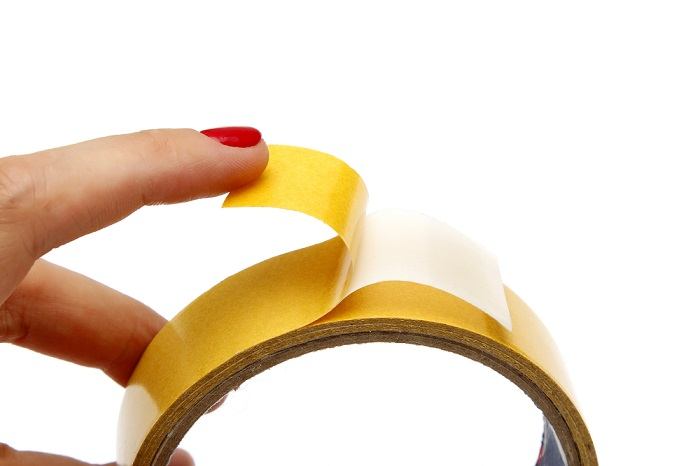
Double-sided tape around the bottom and sides of the bowl can catch ants much like fly paper.
Applying double-sided tape to the outside of the food bowls can prevent ants from getting into the bowls. Not only does this method act as a deterrent, but it can also be deadly for the insects as they stick to the tape and can't escape. Make sure to apply the tape as close to the ground as possible so that your cat's delicate whiskers don't come into contact with the sticky surface.
6. Vaseline
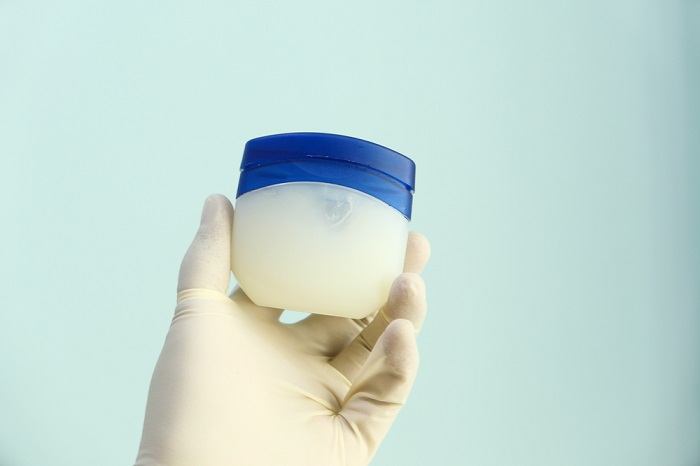
Vaseline can act as a physical barrier and deter ants from climbing into the bowl.
Vaseline applied to the edge of the food bowl can also be an effective way to repel ants. The insects are unable to overcome this slippery barrier to access the contents of the bowl.
7. Place a trench around the bowl
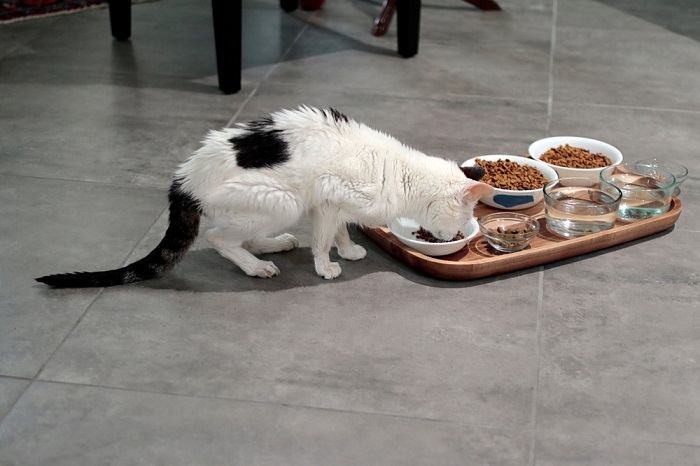
Place bowls on a shallow dish and fill the bowl with water to keep ants away.
Ants cannot swim, which is why water is an extremely effective barrier. Place your cat's food bowl in a larger bowl, tray, or shallow container that you fill with a few inches of water (not so much that the food gets wet). The ants can't get over the water, while your cat continues to get to their food without any problems.
Your pet may need some time to get used to the unfamiliar appearance of the "floating" bowl – but most animals are quick to accept this change.
8. Fence the food bowl
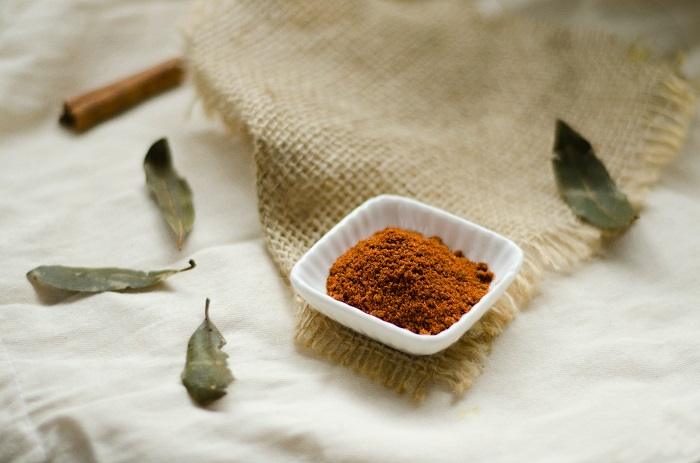
Some substances that are harmless to cats will drive ants away if they are sprinkled around the food bowl.
There are various substances that ants either avoid or cannot cross. If you use them around the food area, the insects can often be effectively deterred - ideally so much that they retreat and seek out an easier source of food. Suitable are chalk, baking powder, ground cinnamon, coffee grounds or ash - simply spread in the area around the food bowl.
Another option is to mix lemon juice and white vinegar in a spray bottle and spray this solution around the feeding place.
The layer should be applied in sufficient thickness to form an effective barrier, as ants can be extremely stubborn. It is important that the substances used are neither toxic nor deterrent to cats. Although agents such as cayenne pepper or black pepper can effectively keep ants away, they could also prevent your cat from eating its own food - which is of course not desired.
If your cat tends to be curious about new substances – especially by licking or eating them – this method may not be suitable.
9. Sprühen von Düften oder Ölen

Although essential oils repel ants, they should not be used in areas that your cat has access to.
Certain scents and essential oils seem to be effective in deterring ants. The targeted spraying or application of such scents around the food bowl can therefore be a helpful measure for defense. The well-known, insect-repellent scents include lemon, tea tree, grapefruit, peppermint oil and clove oil.
However, essential oils are toxic to cats. For this reason, they should only be used in areas that are inaccessible to your cat.
10. Insecticide
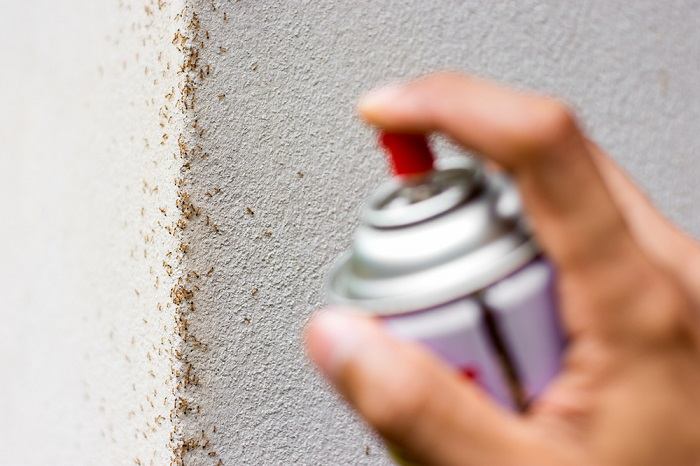
Insecticides kill ants, but they can also harm pets if used improperly. Therefore, it is best to consult a professional.
If the natural methods are not sufficient or you want to specifically control the entire ant colony – and not just prevent them from getting to the food – the use of ant baits can be considered. Special care must be taken: the bait must be placed in a certified, cat-safe box, as the pesticides it contains can be highly toxic to pets.
If you decide to take this measure, it's a good idea to consult a reputable pest control company – the safety of your animals is a top priority. An alternative, less risky method may be to use boiling water directly at the ant nest, as long as you can temporarily keep your pets out of the affected area.

